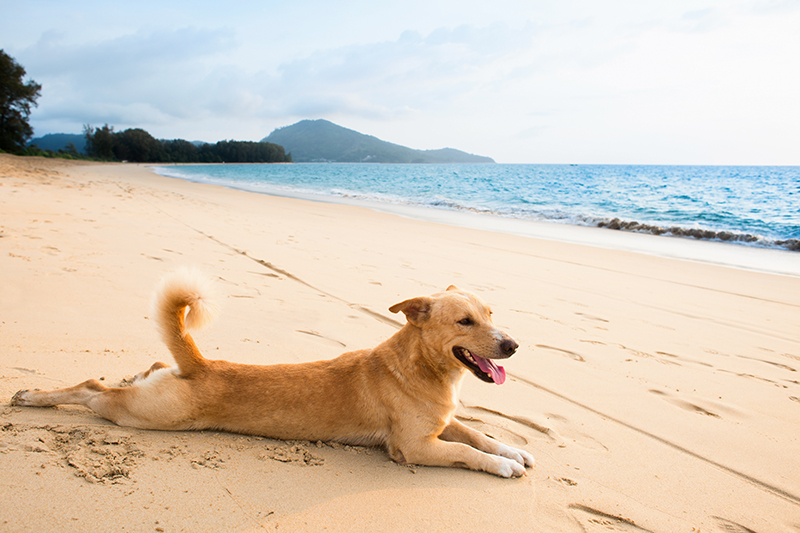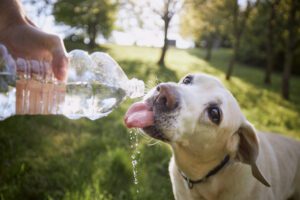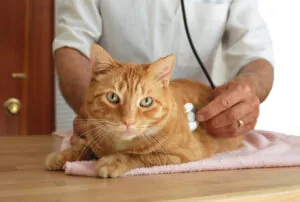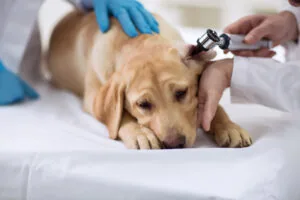Traveling with Your Pets During the Summer
If you’re planning to take a trip with your pets this summer, we have some tips to help ensure a safe and comfortable journey for everyone. Here are some tips for safely and enjoyably traveling with your pets during the summer.
As much fun as it can be for both the pet and the family to bring your pets all along on a trip, traveling with animals generally requires a bit more planning. If you’re staying in hotels, make sure they’re pet friendly before you book. And keep in mind that some hotels and motels that say they allow animals may have weight limits. If you have a 200-pound Mastiff, make sure you let your hosts know ahead of time. If you’re traveling across state lines, bring along your pet’s rabies vaccination record. While this generally isn’t a problem, some states require this proof at certain interstate crossings.
Pack all your supplies in a zippered tote. If you travel often with pets, some of this stuff can just be stored in the tote at home. If you have more than one pet, the best bet is to bring a separate tote for each one. That way, you can keep their food, medications, and toys organized. Some suggestions for the tote include:
Pet friendly guide books
Collar ID Tag
Pre-packaged food (extra just in case)
Water Bowl/Container
Leash
Animal Records/Vaccinations
Medications
Plastic bags/Cleaning supplies
Litter and box *If you’re traveling with a cat.
Pet carrier *For cats and smaller dogs.
For your vehicle
Pet barrier
Harness/restraint
Cargo area mat or liner
Mat/travel bed
Water bowl
Stop every couple of hours to let your pet take a break and have some water. Prep your pet for a long trip. Get your pet geared up by taking him on a series of short drives first, gradually lengthening time spent in the car.
Never let your pet ride with its head out the window – eye, ear, and head injuries could result.
Always put your pet on the leash before opening the door or tailgate to let them out.
Keep your pets safe and secure in a well-ventilated crate or carrier. The crate should be large enough for your pet to stand, sit, lie down and turn around in. Secure your pet’s crate so it will not slide or shift in the event of an abrupt stop. If you decide to forgo the crate, don’t allow your pet to ride with his head outside the window, and always keep him in the back seat in a harness attached to a seat buckle.
Never leave your animal alone in a parked vehicle. On a hot day, even with the windows open, a parked automobile can become a furnace in no time, and heatstroke can develop. In cold weather, a car can act as a refrigerator, holding in the cold and causing the animal to freeze to death.
Traveling by plane?
Unless your furry friend is small enough to ride under your seat, it’s best to avoid air travel with your pets. If you must bring your pet along on the flight, here are a few suggestions to keep your pet safe while flying the friendly skies.
Book a direct flight whenever possible. This will decrease the chances that your pet is left on the tarmac during extreme weather conditions or mishandled by baggage personnel during a layover.
Make an appointment with your pet’s veterinarian for a checkup. Prior to your trip, make sure your pet’s vaccinations are up-to-date and obtain a health certificate from your veterinarian dated within 10 days of your departure. Tranquilizing your pet is generally not recommended as it could hamper his or her breathing, so use this time to check with your veterinarian for ways to relax your pet if you suspect he or she may become afraid, anxious or uncomfortable mid-flight. For travel outside of the continental United States, additional planning and health care requirements may be necessary. Contact the foreign office of the country you are traveling to for more information.
Purchase a USDA-approved shipping crate. The crate should be large enough for your pet to stand, sit and turn around comfortably, and lined with some type of bedding—shredded paper or towels—to absorb accidents. Prior to your trip, tape a small pouch of dried food outside the crate so airline personnel will be able to feed your pet in case he or she gets hungry during a layover. The night before you leave, freeze a small dish or tray of water for your pet. This way, it can’t spill during loading and will melt by the time he or she is thirsty. Make sure the crate door is securely closed, but not locked, so that airline personnel can open it in case of an emergency.
Make sure your pet’s crate has proper identification. Mark the crate with the words “Live Animal,” as well as with your name, cell phone and destination phone number, and a photo of your pet. Should your pet escape from the carrier, this could be a lifesaver. You should also carry a photograph of your pet.
Tell every airline employee you encounter—on the ground and in the air—that you are traveling with a pet in the cargo hold. This way, they’ll be ready if any additional considerations or attention is needed. If the plane is delayed, or if you have any concerns about the welfare of your pet, insist that airline personnel check the animal whenever feasible. In certain situations, removing the animal from the cargo hold and deplaning may be warranted.
Share This Post
Recent Posts
About Shallowford Animal Hospital
Shallowford Animal Hospital and The Pet Spa at Shallowford are dedicated to the exceptional, compassionate care your pet deserves. Pets hold a very special place in our families, and we treat yours like our own.




